ENERGY

(509) 737-8778
8524 W. Gage Blvd., #A1-300 Kennewick, WA 99336 tcjournal.biz


(509) 737-8778
8524 W. Gage Blvd., #A1-300 Kennewick, WA 99336 tcjournal.biz
Melanie Hoefer Hair
President / Founder
509-737-8778 ext. 5 melanie@tcjournal.biz
Wendy Culverwell Editor


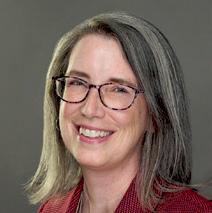
509-737-8778 ext. 6 editor@tcjournal.biz
Chad Utecht
Advertising Account Manager 509-737-8778 ext. 1 chad@tcjournal.biz
Kristina Lord Publisher

509-737-8778 ext. 3 publisher@tcjournal.biz
Tiffany Lundstrom
Advertising Director
509-737-8778 ext. 2 tiffany@tcjournal.biz
Vanessa Guzmán Graphic Designer 509-737-8778 ext. 4 ads@tcjournal.biz



The Tri-Cities is uniquely blessed when it comes to energy, and that makes it uniquely well positioned to become the regional, if not national, capital of clean energy development.
It will take the community working together to knit its many assets into a new engine to fuel our economy, from research at the Pacific Northwest National Laboratory, to the nuclear knowhow on display at Energy Northwest’s Columbia Generating Station and the Hanford site.
The work started more than a decade ago, as the Port of Benton, Washington State University Tri-Cities, Tri-City Development Council and labor and private industry came together with the mission to transform a community built by energy into one that supplies clean energy.
The effort, known today as “Washington Vertical,” paid off in November when the Association of Washington Business held its Energy Policy Summit in Kennewick, the inspiration for our Energy section in this month’s edition.
The summit was both inspiring about the possibilities of generating power without climate-altering carbon emissions, and a wake-up call to the reality that the region’s power supply is already constrained.
It’s a difficult message to those who are accustomed to thinking of the North-
west as home to abundant and low-cost energy, courtesy the network of dams and other facilities that feed energy into the Bonneville Power Administration’s vast transmission system.
That was true when BPA came into being in the 1930s. But demand within BPA’s territory has grown. The megawatts are all but spoken for. Newcomers to the system who want the cheapest Tier 1 power are capped at 10 megawatts, enough to power about 7,000 homes but not enough to serve energy-intensive industries, like hydrogen production.
Solar panels, wind farms and various battery projects are great additions, but they are intermittent and don’t replace the fossil-fuel burning plants being taken out of service. Portland General Electric stopped burning coal at its Boardman, Oregon, plant in 2020.
The 2019 Clean Energy Transformation Act, approved by the Legislature and signed into law by Gov. Jay Inslee, set the state on a path to generate power free of greenhouse gas emissions by 2045, with intermediate goals before then.
The legislation puts Washington among the leaders in embracing clean energy and for all the challenges, it puts the Tri-Cities at the heart of that mission.
The pieces are here: professional expertise, a knowledgeable workforce, educational institutions, land and, of course, abundant sun and hydropower. It’s time to seize the opportunity.

In Ferndale, near Bellingham, a battle is being waged over a shuttered aluminum plant.
Alcoa closed the plant in 2020 – and permanently idled another near Wenatchee in 2021 – but it is targeted to reopen using green energy to produce aluminum. The plan is widely supported as a major job creator, with a notable exception.
The Bonneville Power Administration won’t power it, saying it can’t assure Alcoa Intalco Works the uninterrupted power it needs.
In May, a dozen members of Washington’s congressional delegation moved to intervene, urging BPA to work with Blue Wolf Capital to find a solution and generate 700 jobs at the site.
The stakes couldn’t be higher for the Tri-Cities, or the many Northwest communities served by electric utilities that buy power from BPA.
BPA supplies power to the Benton and Franklin public utility districts, Benton Rural Electric Association and Richland Energy Services.
BPA caps new customers for its cheapest Tier 1 power at 10 megawatts. That’s about the power used by 7,000 homes and it rules out power-intensive industry, particularly those that depend on high heat such as aluminum smelting.
The rate essentially doubles when de-
mand rises above the 10-MW cap. The cap, which applies across the system, reflects a simple reality: BPA is nearing its capacity to deliver power, particularly during the so-called low-water years that affect the output of dams.
“We are probably at the capacity of the system right now,” said Bob Schuetz, CEO of Energy Northwest, during a November energy summit in Kennewick organized by the Association of Washington Business.
Energy Northwest operates the 1,200-MW nuclear plant north of Rich-
land, White Bluffs Solar Station, Packwood Lake Hydroelectric Project and the Nine Canyon Wind Project and sends power to BPA.
For the economic development community, the cap means energy intensive industry must look elsewhere or purchase expensive power on the open market.
“We have good rates as long as you don’t exceed 10 megawatts,” said Karl Dye, president of the Tri-City Development Council (TRIDEC), the region’s economic development agency.
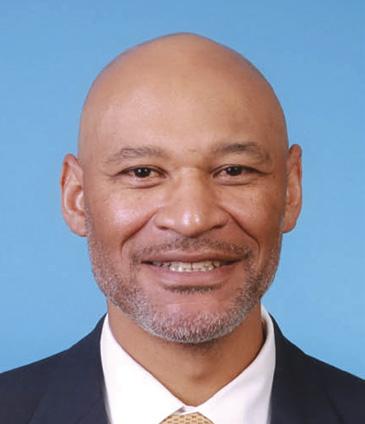
Dye said TRIDEC occasionally fields inquiries from location scouts who still think the Northwest is a haven for cheap, abundant power, which it was in the decades after BPA formed in 1934, thanks to abundant hydropower.
Population and industrial growth have put the system on notice. Coupled with Washington’s ambitious manufacturing goals and a shift away from traditional power sources – think coal and possibly natural gas – BPA’s vast portfolio of generating stations and transmission lines is reaching its limits.
BPA distributes power generated by dams and other facilities to 142 utility customers, including cooperatives, municipalities, public utilities, federal agencies, investor-owned utilities and tribal utilities. Its 300,000-square-mile service area is home to 14.4 million residents and is tied together by more than 15,000 miles of transmission lines and 262 substations.
Dye, who joined TRIDEC in February 2020, said power was the first order of business when he came to the Tri-Cities. In his first week, shortly before pandemic shutdowns took effect, he met with utilities and BPA.
“How do we get more power to the Tri-Cities?” he wanted to know.
The Mid-Columbia is well-positioned to become an energy leader, thanks to local expertise in building and operating nuclear
For more than 80 years, the Bonneville Power Administration has supported local economies and regional growth by providing affordable, clean energy to consumer-owned utilities such as Benton Public Utility District, Benton Rural Electric Association, the city of Richland, Franklin PUD and Columbia REA.
Today, BPA is taking steps to meet the Tri-Cities’ growing needs as the area expands, attracts new businesses and remains a hub for outdoor recreation.
We market power from 31 federal dams and one nuclear plant through a transmission system covering 15,000 circuit miles and extending west to east from the Pacific Ocean to the Continental Divide and north to south from Canada to just beyond the southern borders of Oregon and Idaho.
Our electric grid connects the Northwest with Canada and California, playing a critical role in an integrated energy landscape throughout the West.
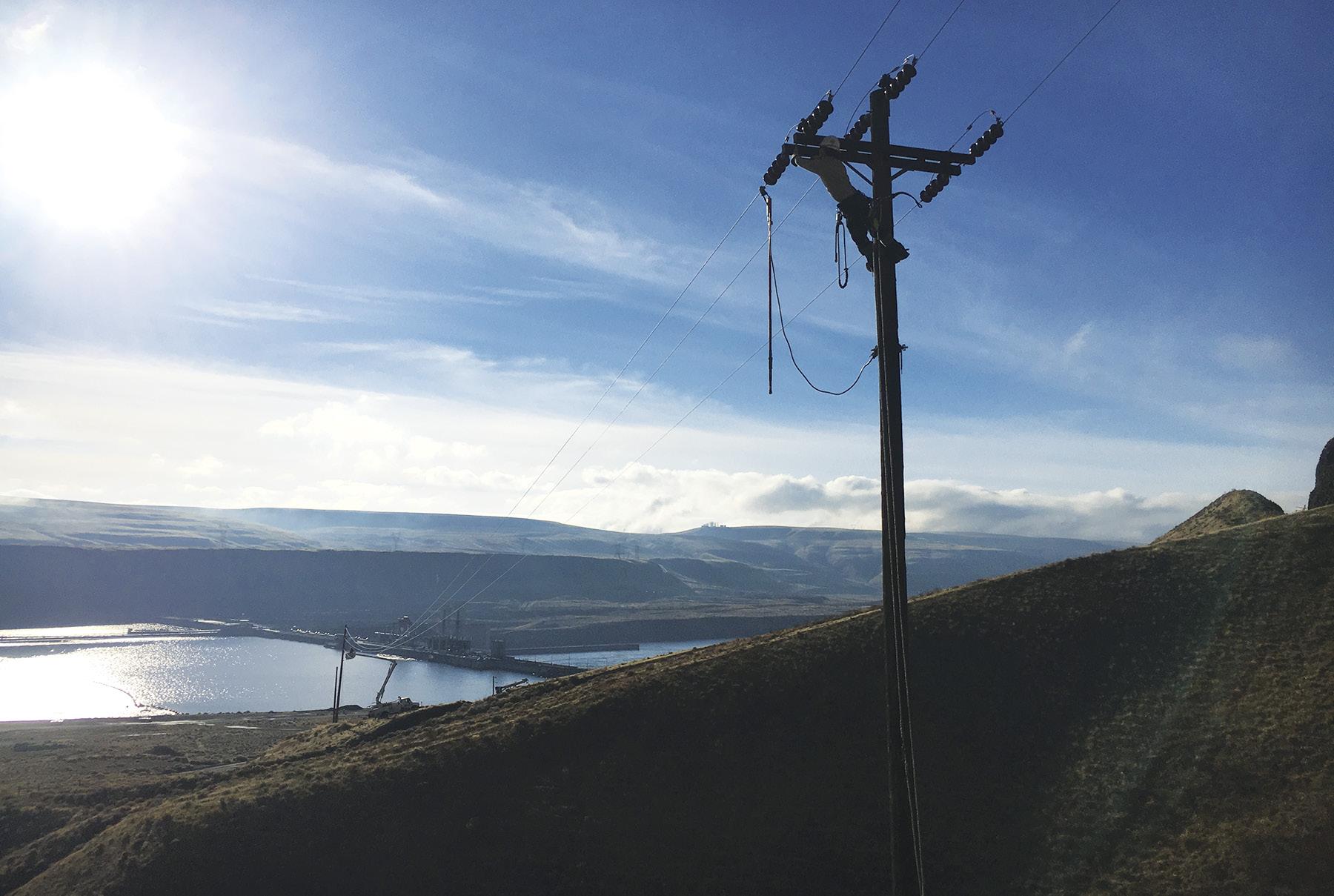
Growth in the Tri-City area and climate change impacts have contributed to mounting transmission system constraints.
The heat dome event in June 2021 saw temperatures in the Tri-Cities rise above 115 degrees. The historic high tempera-
tures required BPA to take extraordinary measures to deal with transmission congestion and keep the lights on. This included partnering with a local fire department to hose down transformers, keeping them cool and in service.
mostly carbon-free power to customers that serve retail consumers in the Tri-Cities.
In addition to hydropower, we market electricity from the Columbia Generating Station in Richland, which provides more than 1,150 MW of carbon-free electricity.
area. It is also a key element in mitigating the impacts of climate change, which presents a growing threat to the region and the world.
Hairston BPAIf unaddressed, these bottlenecks could lead to blackouts.
That’s why BPA is proposing to construct or expand four transmission lines to increase BPA’s ability to deliver electricity to the area by 66%, to 1,750 megawatts.
This work will reinforce existing substations and lines, and increase the physical and cybersecurity of BPA’s operations in the area.
We are in the early stages of introducing these projects to residents and others who may be impacted. BPA is committed to working together to ensure reliable electrical service for decades to come.
BPA is proud to provide low-cost,
For the past decade, Energy Northwest, which owns and operates the nuclear plant, has helped BPA manage operations when high spring runoff and spikes in wind energy output creates too much energy – referred to as oversupply – by ramping down to its minimum generating amount.
Energy Northwest also has worked with BPA to control costs over the past several years, which has helped us keep rates flat, and in some cases, reduce power rates.
BPA continues to deliver value to the region by marketing hydropower generated by the federal dams operated by the U.S. Army Corps of Engineers and the Bureau of Reclamation.
Low-cost hydro power produced by federal dams serves as an economic engine of the region and has supported the growth and prosperity of the Tri-Cities
As system operations become more sophisticated and coordination across the west expands, we hope to extend and enhance the system’s value by participating in new markets.
In early 2022, BPA began participating in the Western Energy Imbalance Market, or EIM.
The EIM is a voluntary market, offering opportunities for more efficient system operations and an additional source of revenue which supports keeping power rates low. BPA also is working to shape emerging day-ahead markets that could further expand our ability to capture added value and efficiencies in supplying power to our customers.
Our goal is to actively influence market formation so the system provides value for decades to come.
Another way BPA extends the value of the power system is through energy efficiency measures that create energy savings for BPA and our customers. Here
Every day there is a new article or study proclaiming an urgent need for climate action, with myriad proposed solutions praising renewables as the cure-all.
However, the realities of decarbonizing the electric grid are often far more complicated and nuanced than portrayed.
Wind, solar and battery storage technologies are important, and deployment of these resources is underway, with Energy Northwest investing in and developing new utility-scale solar and storage projects.

However, we recognize renewables alone cannot solve the climate change problem and maintain a reliable supply of electricity, regardless of advances in energy storage technology.
Why? The answer is simple: reliability.
Wind and solar generate electricity inconsistently, yet we consume energy 24 hours a day, 365 days a year.
Electricity is generated, transmitted and consumed simultaneously. Supply must always equal demand.
If demand increases and supply cannot rise to meet it, then there is potential for rolling blackouts.
Conversely, if supply suddenly decreas-
es then, absent another generator idling online, a blackout could occur.
are being retired in the long run.
With no plans to replace this firm generation, the region will be unable to meet future demand.
release it when electricity is needed).
Unfortunately, we lack the capacity to build ample new hydroelectric resources in the region.
Energy NorthwestAs a result, for every megawatt of wind or solar on the grid, other non-intermittent generation or energy storage must be available to cover an unplanned loss of output.
This is why utilities focus on “resource adequacy,” planning to ensure sufficient energy is available to meet future demand.
In the Northwest, we are approaching an inflection point.
The states of Washington and Oregon have adopted comprehensive clean energy policies requiring 100% carbon-free electricity in the next two to three decades. This is a worthwhile goal and with proper planning and investment we are well positioned to achieve it.
However, thousands of megawatts of coal-fired electricity will be retired over the next few years and natural gas plants
If this doesn’t sound concerning, consider the impact of weeks without electricity during summer highs and winter lows. This is not a theoretical exercise.
In recent years, there have been major energy shortfalls and electricity crises in the United Kingdom, European Union and California, to name a few.
Access to reliable electricity is the best global indicator of economic prosperity. Electricity is life!
In the U.S., our economic success is intrinsically tied to electricity being available when and where it’s needed.
Strain on our electric system will mount as our economy and population grow. Greater adoption of electric vehicles will exacerbate the problem – anything with a battery needs to be charged.
How will we keep the lights on without coal and natural gas? In the Northwest we are blessed with abundant hydropower, which integrates well with renewables (when wind and solar output increase, hydropower can back down, store water and
Fortunately, we are seeing the emergence of new nuclear energy technologies, which are designed to fill the void.
The existing fleet of U.S. nuclear power plants accounts for 20% of the nation’s electricity but more than 50% of our carbon-free power.
Our future clean energy needs will require smaller, versatile designs: small modular and advanced reactors.
These new-design reactors are stateof-the-art, flexible yet reliable, safe, cost-effective, and can provide not only abundant carbon-free electricity but also high-temperature steam for industrial applications. They truly embody American innovation.
As market penetration of wind and solar grows, advanced reactors can pair with these resources to provide balance: a reliable electric grid and dependable, predictable electricity.
Many new nuclear energy technologies are on the threshold of commercialization,
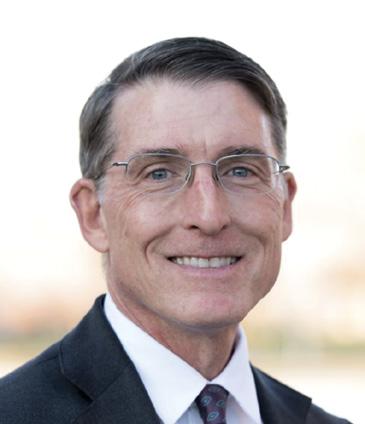
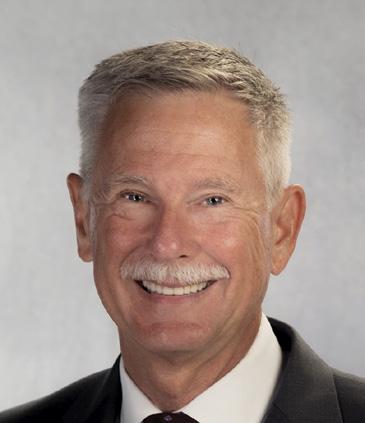
Research at Pacific Northwest National Laboratory has contributed for decades to the region’s leading role in clean energy technology development and deployment. The laboratory, based in Richland, has made advancements in energy storage, energy efficiency, clean energy and chemical production and electricity grid innovation.
Today, our region has the potential to continue demonstrating leadership as private and public investments in clean, sustainable energy technologies reaches an all-time high.
At the same time, we must ensure that the energy system of the future continues to power the Northwest’s diverse economy in a way that is reliable, affordable and resilient.
This was the subject of an Energy Solutions Summit held in the Tri-Cities on Nov. 8-9, where members of Congress, energy producers and industry experts spoke about the future of energy production and distribution in the region.
PNNL, one of 17 U.S. Department of Energy national laboratories, is strategically positioned to help the nation meet its clean energy goals by applying
multi-disciplinary research that spans from advancing scientific discovery to driving innovations that enable sustainable energy.
With nearly 6,000 employees, we work with collaborating researchers, stakeholders and industry from across the region and around the world to help develop these solutions and look for opportunities to demonstrate and deploy them in the region.
PNNL researchers are making breakthroughs in energy science such as developing new catalysts and chemical processes that can create more efficient processes for turning agricultural waste and carbon dioxide into fuels and other products, creating new energy storage materials, developing new ways to make clean hydrogen and breaking down and reusing plastics.
These are all aspects of supporting the nation’s climate and clean energy
agenda. Campus adds new facilities
That research will unfold at two recent campus additions: the Energy Sciences Center and the Grid Storage Launchpad. These two facilities, adjacent to each other on the PNNL campus, provide experimental capabilities and instruments unavailable anywhere else in the country.
The Energy Sciences Center, dedicated last fall, is supporting regional research collaborations and expands the nation’s capability and visibility in energy sciences to benefit the state, nation and world. The $90 million Energy Sciences Center was funded by the Department of Energy’s Office of Science and leveraged an $8-million investment from Washington State’s Clean Energy Fund to purchase specialized equipment.
Battelle and PNNL also contributed.
Research at the 140,000-square-foot ESC is advancing fundamental chemistry
and materials research using advanced computing. The scientific discovery that takes place here will inform PNNL’s energy storage technology development.
The Grid Storage Launchpad, with construction already underway, will serve as a collaborative national center for validating and accelerating new energy storage technologies. This builds on PNNL’s expertise in exploring the scientific foundations of energy storage, advancing multiple types of energy storage technologies, integrating energy storage with the power grid and providing policy analysis and valuation expertise.
The Grid Storage Launchpad, or GSL, supports DOE’s Energy Storage Grand Challenge, an effort to create and sustain global leadership in energy storage utilization and exports, with a secure domestic manufacturing supply chain that does not depend on foreign sources of critical materials. Also, the GSL supports the Long Duration Storage Shot, DOE’s goal to drastically reduce the cost of grid-scale energy storage.
The $75 million facility, funded by DOE’s Office of Electricity, will host a

Most people drive gasoline-powered vehicles. Others have moved over to electric vehicles.
But imagine a third option – driving a hydrogen-powered car or truck at a lower cost per mile.
That possibility is coming sooner than you think, thanks to a local startup company called STARS Technology Corporation.
The Richland-based company is deploying its first two prototype hydrogen generators – with the help of the Fuse Fund group in Richland, and scientists and engineers from the Pacific Northwest National Laboratory, and HiLine Engineering and Fabrication, a local high tech engineering company in Richland.
It’s something Bob Wegeng, STARS Technology’s president and chief technology officer, has worked toward for over 25 years.
The commercial demonstration, led by Southern California Gas Company (SoCalGas), will place two prototype STARS-165 Clean Hydrogen Generators – called Beta 1 and Beta 2 – at SunLine Transit Agency’s hydrogen-fueling station in Thousand Palms, California.
The demonstration project, called H2 SilverSTARS, will produce clean hydrogen to fuel SunLine’s 17 buses.
Eventually, a Beta 3 prototype is intended to be the mass-produceable commercial model.
LLC and the Fuse Fund group, were impressed with STARS’ new technology, and the potential opportunity being created by a worldwide transition from fossil energy to clean hydrogen.
The Fuse Fund group of investors, who have a mission to help local startup companies, made a significant investment in STARS.
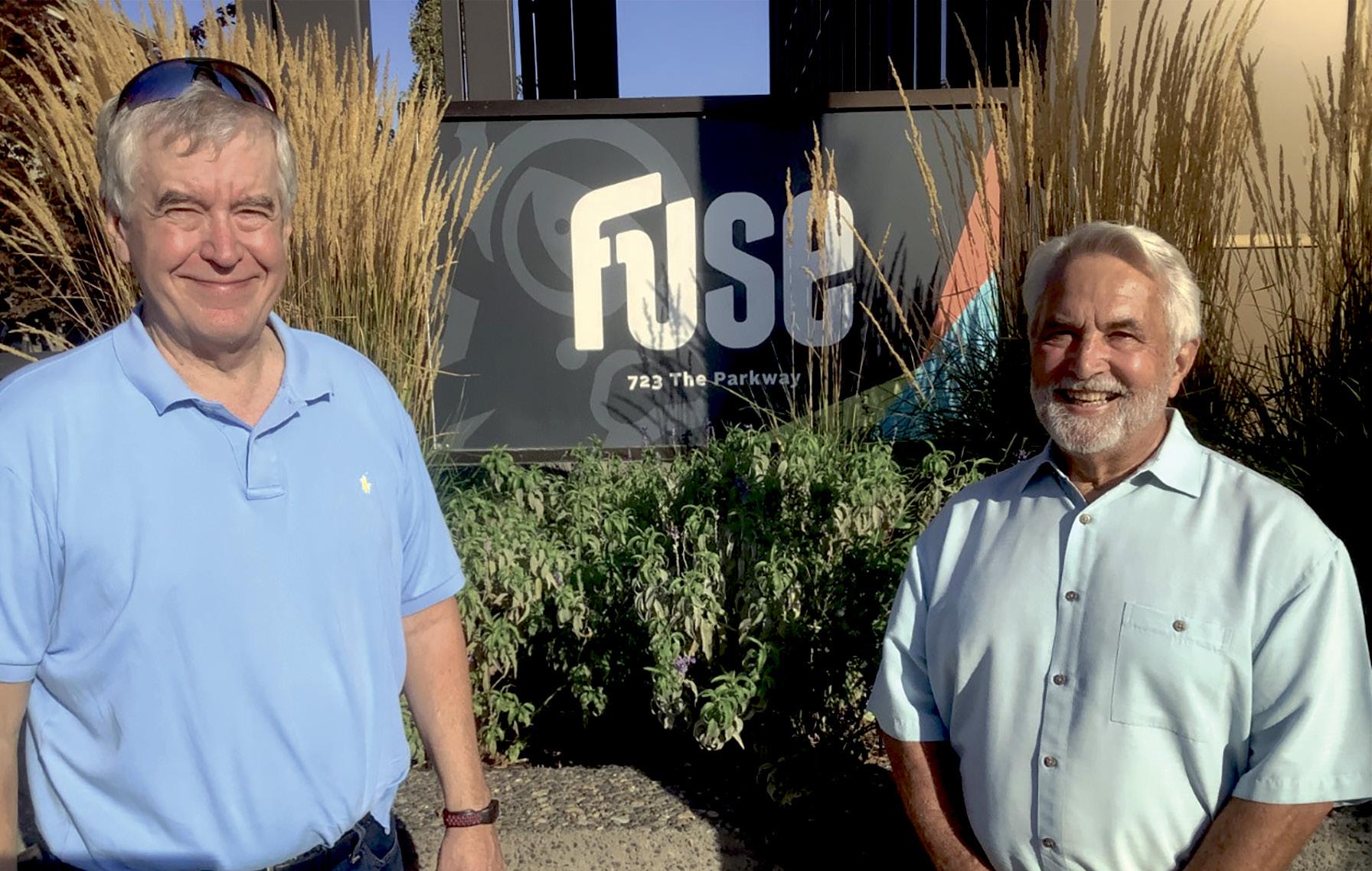
“The prototype has been working since December, pumping out hydrogen,” Conger said.
The first of two generators was delivered
in September to SoCalGas,, which is the nation’s largest natural gas utility.

SoCalGas is managing the SunLine site preparation and expects to have the generator producing hydrogen in January.
Conger and Fuse aren’t the only ones impressed with the project.
STARS was honored recently at the Rice Energy Technology Venture Forum as a top-10 energy technology company out of 100 startups at the forum.
The company also received the Richland Rotary Club’s Entrepreneurial Award in November.
STARS was founded in 2016 to commercialize a portfolio of chemical processes from research and development at PNNL.
The startup is helping to create a future where low-cost, renewable hydrogen powers transportation, industry and more.
STARS has an exclusive license to technology developed at PNNL.
Wegeng, who left PNNL to take on the challenge of bringing the new chemical process chip technology to industry, is leading a group of five local individuals who are commercializing the technology.
“Early experiments showed the potential to develop a new class of devices – ‘chemical process chips’ – that intensify chemical reactions,” Wegeng said. “These successes helped to raise more funding opportunities to continue the development.”
Over the years, many specific applications and new components were developed. In all, over $50 million was invested in the PNNL research.
In 2016, the U.S. Department of Energy encouraged technology developers to take their inventions to market, and STARS was formed.
Today, STARS’ assets include a local investment, a dedicated team of individuals working toward a common goal, and the exclusive right to intellectual property related to chemical process chips developed at PNNL.
Those patents provide both ongoing and
facilities as well as dams, wind farms and solar stations. Producing hydrogen, which entails splitting water, is a potential industrial target, but would exceed the energy cap.
Manufacturing the actual equipment could be feasible.
“We are well-positioned to create clean energy here, but BPA rules are a damper,” Dye said.
Dye sees small modular nuclear reactors as the future, along with potential pol-
HAIRSTON, From page C3
are some local examples:
• BPA and Benton REA worked with JK Family Dairy, a fourth-generation family farm, to replace fixed-speed circulating fans with controlled fan motors. This reduced fan energy use by 50% while keeping cows comfortable and saving the farm more than $2,000 annually.
• BPA partnered with the city of Richland to make lighting, heating, air conditioning and window and door improvements at Legacy Jiu-Jitsu Academy, reducing energy use by 10,800 kilowatt-hours and saving its owners approximately $800 annually.
• The city of Kennewick saved 1.1 million kWh by participating with BPA
icy shifts that would prioritize economic development within BPA, as it is with its semi-sister, the Tennessee Valley Authority.
X-energy, together with Energy Northwest and Grant County Public Utility District, aims to develop a fourth-generation nuclear plant to the Energy Northwest campus, though not before 2027.
In the interim, Darigold Inc., the Seattle dairy cooperative, is a telling example of the type of business the region can expect to attract. It broke ground in September on
and Benton PUD in a Wastewater Energy Coaching initiative that implemented low- and no-cost improvements to plant operations.
• Franklin PUD and BPA helped a cold storage facility implement seven new construction measures, reducing first-year energy use by over 2.1 million kWh.
These are just a few highlights demonstrating how energy efficiency is a cost-effective way to stretch the value of the federal Columbia River Power System, avoiding costly investments in new energy generating resources.
BPA and its federal partners continue to work with the state of Washington, Central Washington Tribes and others to demonstrate our commitment to mitigating the impacts from the development
its $600 million butter-and-milk powder facility in Pasco.
Like all food processors, Darigold relies on heat to turn raw ingredients into consumer products. In Pasco, it will process 8 million pounds of milk, relying on clean-burning, state-of-the-art natural gas systems to do the job.
Natural gas only goes so far. Washington state aims to double manufacturing jobs by 2031 under a bill sponsored by then-Rep. Matt Boehnke, R-Kennewick, in 2021. Boehnke will be seated in the state Senate in January.
and operation of the congressionally-authorized Federal Columbia River Power System on fish and wildlife in the region.
Mitigation efforts include making fish passage improvements at the dams to increase survival, obtaining land to help wildlife that lost critical habitat to federal dam construction and inundation and working with our tribal, state and other partners in Columbia River tributaries to improve conditions for salmon, steelhead and other species across the Columbia Basin.
BPA has made tremendous progress toward extending the Columbia River Fish Accords for another three years. These agreements with tribes and states, which originated in 2008, have been incredibly effective for implementing crucial and
His bill, Building Economic Strength Through Manufacturing Act, aims to add 300,000 new jobs and double the number of small manufacturing firms. The bill was unanimously approved in the House and Senate and took effect in July.
At the time, Boehnke said the state, working with business, unions and the building trades can position Washington as a manufacturing “powerhouse.”
Dye applauds the goal, but said there is a piece missing, electricity, “We need more power to make more stuff,” he said.
complex fish and wildlife mitigation projects, while also providing a framework for the parties to improve relationships and innovate novel approaches to fish and wildlife conservation.
Amid all of this, we continue to discuss a compromise for system operations that helps salmon, steelhead, bull trout and other native species while supporting the region’s economy. Finding common ground among diverse interests is paramount, so we can honor our commitments and carve a path to the region’s clean energy future.
John Hairston is administrator and CEO for Bonneville Power Administration.
SCHUETZ, From page C4
and their deployment promises to usher in a new era of innovative, zero-carbon electricity that can form the foundation of our future clean energy economy.
As we look ahead, the challenges are evident, but so are the solutions.
We can continue operating existing nuclear and hydroelectric facilities while we grow the fleet of available renewable resources and energy storage systems.
The importance of existing nuclear power, and its value to energy security and independence, has become increasingly apparent: plants once slated for premature closure – in California, Germany, Belgium, Japan – are now being restarted or indefinitely kept online.
PNNL, From page C4
battery characterization center housing $8.3 million in state-funded, advanced imaging equipment.
Putting the principles to work at home
PNNL’s commitment to a clean energy future extends to our campus operations.
PNNL is one of four national laboratories in the DOE’s Net Zero Labs Pilot Initiative, launched in May in support of President Joe Biden’s goal to reach net-zero greenhouse gas emissions no later than 2050.
As part of the initiative, PNNL will demonstrate how new technologies, innovative approaches and partnering with industry and communities can lead to net-zero emissions and decarbonization of operations.
Even before the DOE announcement, PNNL had its own Net-Zero Emissions
However, more generation will be needed to anchor the grid, and small modular and advanced reactors are a viable option. Bringing carbon-free nuclear plants online – as coal and natural gas go offline – is imperative to both the transition to clean energy as well as the long-term sustainability of a clean energy system.
The good news is there is growing support for new nuclear technologies.
Many countries – from Canada, France, and the U.K. to Poland and Estonia – are investing heavily in new reactor technologies as part of their climate mitigation plans.
In the U.S., the federal government is spurring commercialization of modern
reactor designs, while many states are actively exploring policies to expedite the build out of new nuclear energy facilities. There is also increasing public support for nuclear energy.
In a recent statewide opinion poll, three-fourths of Washington residents said they favor nuclear energy as one of the ways to provide electricity, and 82% believe nuclear energy will be important for meeting our future energy needs.
Energy Northwest is partnering with several advanced nuclear companies and last year joined X-energy and Grant PUD in forming the TRi Energy Partnership. Our goal is simple: to deploy advanced nuclear technologies in central Washington and provide the Northwest with new
sources of clean, reliable energy.
Meeting future energy demand with 100% clean electricity is feasible if our efforts are directed toward the practical and the possible.
Priority must be given to maintaining existing carbon-free resources – from wind and solar to nuclear and hydropower – while we embrace innovation by pursuing new clean energy resources.
Clean and reliable electricity are not mutually exclusive, and we have the opportunity in Washington to prove it.
Bob Schuetz is CEO of Energy Northwest, which operates hydro, nuclear, wind, solar and storage facilities in Washington and Oregon.
and Resilient Operations initiative, which seeks to fully transition to a net-zero campus by 2030, while enhancing resilience to protect against power disruptions.
To achieve its emissions goals, PNNL is moving away from using energy provided by carbon-intensive sources, such as natural gas, and transitioning to electrifying its buildings, vehicles and equipment in partnership with local electric utilities, which also are committed to clean energy sources.
The laboratory also will reduce energy use and emissions through efficiency upgrades and operational changes. For example, PNNL is using waste heat captured from supercomputers to heat other buildings and is taking steps to address potential emissions of gases when research equipment is serviced.
PNNL will update building design standards to reduce emissions and maximize
efficiency in construction projects. We also will model campus building to inform and test new operating approaches to optimize performance in a way that reduces emissions and protects against disruptions in electric utility service.
Building upon our chemistry, materials science and engineering expertise, PNNL will advance energy efficiency, renewable integration with the power grid, energy storage and other research areas to develop, demonstrate and deploy innovative technologies toward net-zero carbon emissions.
Clean energy is more than a hot topic or current buzzword, it’s a necessity for addressing climate change. But we need a wide array of solutions for decarbonizing our energy system – maximizing energy efficiency across all energy sectors, eliminating green-house gas emissions from
power generation, electrifying end-uses, leveraging the benefits of nuclear energy and developing net-zero carbon fuels and chemicals.
As you can see, PNNL is committed to research that provides a pathway for a more sustainable energy future and takes steps with our own campus to make that happen. A clean-energy future relies on the science of energy – society’s ability to achieve essential energy transformations and harness the power of chemistry.
Lou Terminello is associate laboratory director of the Physical and Computational Sciences Directorate at Pacific Northwest National Laboratory.
Jud Virden is associate laboratory director of the Energy and Environment Directorate at Pacific Northwest National Laboratory.
Energy faces a new frontier.
Demands on data storage and energy to fuel computing power are exponentially ramping up as technology evolves and digital industries follow.
The utilities that manage local power grids work around the clock to keep ahead of the curve and meet demand as the Tri-Cities and its surrounding communities grow at a breakneck pace.
One emergent industry of the past 12 years is cryptocurrency. New cryptocurrency is created by computers solving complex equations to verify transactions involving digital currency.
Utility rates are a big determinant of where crypto mining businesses and their data mining cousins decide to locate operations.
The main ingredient in cryptocurrency and data mining is computing power, which is in turn fueled by electricity. The more computing capacity, the more cryptocurrency or data can be mined.
As with other energy intensive sectors or large-scale operations, the hunt for low-cost energy from new industries can create a full-court-press of demand on public utility districts (PUDs) and rural electric associations (REAs) offering the lowest rates.
“One of the things we see here (in the
Columbia Basin), in comparison to U.S. energy prices, is our prices at Franklin PUD are substantially lower than the majority of the country,” said Scott Rhees, general manager and CEO of Franklin PUD.
This is due in part to the hydroelectric dams that produce power for the Bonneville Power Administration (BPA), which serves the three primary local utilities:
Franklin PUD, Benton PUD and Benton REA.
However, Franklin and Benton counties can’t claim the cheapest rates in the state.
“We just can’t compete with some of the pricing of the Chelan, Grant and Douglas County PUDs (which own their own dams),” said Holly Dohrman, assistant general manager at Franklin PUD.
Prospective high-energy-need clients have headed elsewhere due to the cost of sourcing additional energy to meet their needs.
As a result, each utility reported having less than a dozen cryptocurrency or data mining-type operations in their respective customer bases. None are largescale operations.
Because the utilities source the bulk of their energy from BPA, they are subject to the federal power marketing agency’s policies and procedures.
“If the load goes above 10 megawatts, there’s a provision where it’s called a ‘new large single load’ that cannot be served by any reference power,” said Jon Meyer, senior director of finance and customer service at Benton PUD.
To exceed this cap, customers must obtain a contract for additional energy either from BPA or from another provider.
If buying from BPA, Meyer said, “It’s more than double – maybe triple – what the BPA Tier 1 rate is.”
“For a customer to go out on the open market, the cost has increased dramatically,” Rhees said. “It’s what makes it difficult for people to come in. We have seen price escalation in the past two years.”
In addition, each utility has its own rate schedules in place for different levels of energy users and types of customers, which serve to shield other customers
When it comes to heavy industry and manufacturing, low-cost electricity and the power sector are foundational to producing competitively priced goods and products.
The Tri-City area is increasingly on the radar of companies looking for communities to bring new industries and jobs, the kind of jobs that include good wages and benefits and that offer stable, multi-generational employment opportunities.
There are a lot of reasons to love the Tri-Cities, but heavy industry and manufacturing are attracted by the Northwest’s reputation for abundant and inexpensive hydropower.
Low-cost electricity has been the economic engine of the Northwest for decades. But times are changing, and not for the better when it comes to the possibility of industrial development in many Washington communities.
Speaking from experience, I can tell you industrial processes with big job opportunities are often electricity intensive, requiring not only affordable electricity, but large amounts of electricity available 24 hours a day, every day.
Around-the-clock operations put these customers into what is referred to as the “baseload” of an electric utility. While
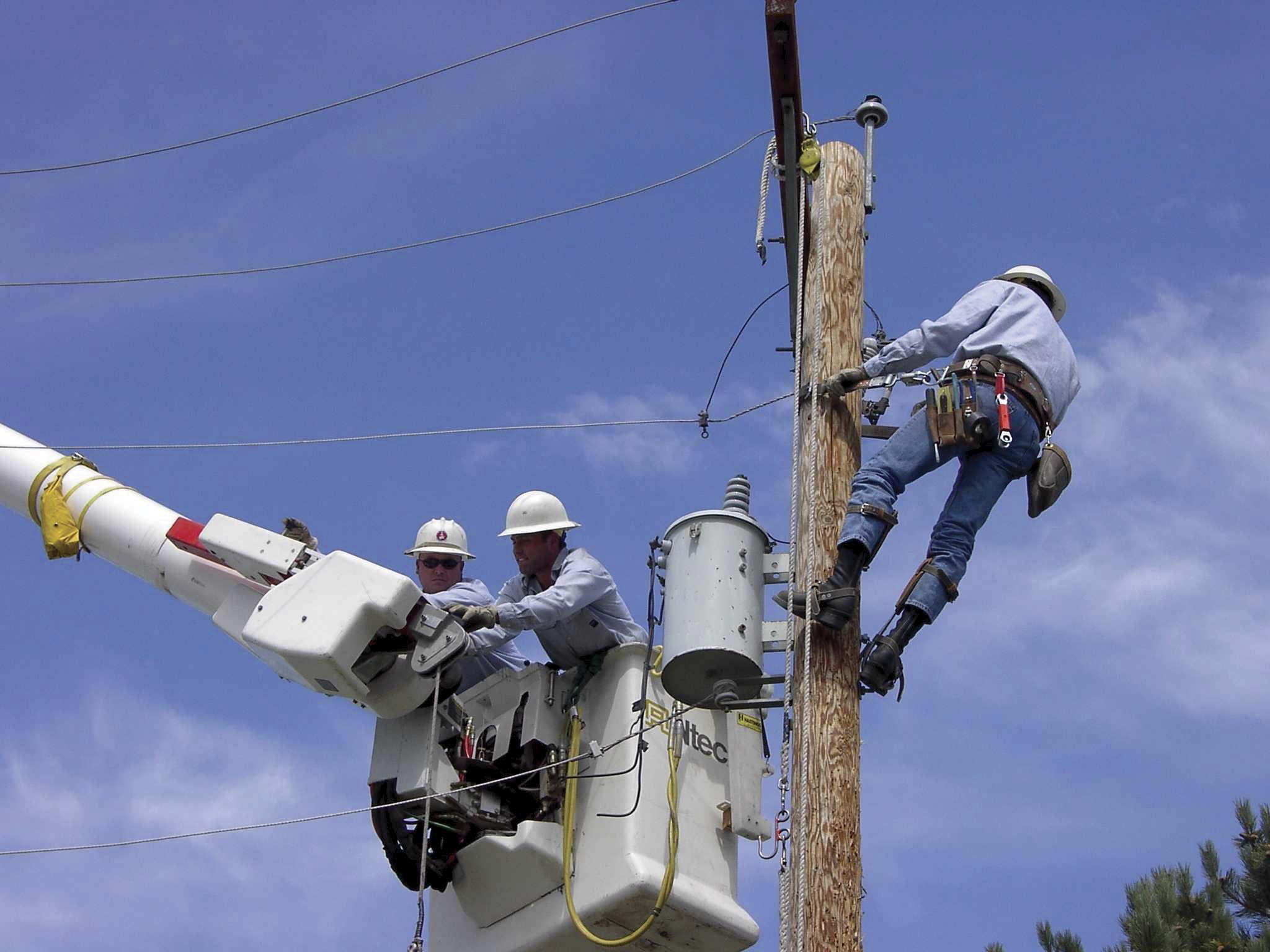
electricity demand can vary over a wide range from day-to-day and month-to-month driven mostly by weather, baseload is the minimum power that must be available on a constant basis.
When electricity is a primary input to a business process, it is nonnegotiable that it must be available and affordable.
Therein lies the rub between economic development opportunities involving electricity intensive industry and Washington State’s Clean Energy Transformation Act, or CETA. CETA is driving development of variable and intermittent wind and solar farms.
While CETA’s 100% non-emitting electricity generation requirement by 2045 may seem like a far-off date, the effects of its post-2025 prohibition on coal-fired baseload generation and punitive financial penalties for using natural gas generation beginning in 2030 are impacting electric utilities like Benton PUD today.
Here’s why. Benton PUD and all electric utilities serving Tri-City area customers of the Bonneville Power Administration, or BPA. BPA is the federal agency responsible for wholesale marketing of the electricity generated by the Federal Columbia River Power System, or FCRPS.
The FCRPS includes 31 hydroelectric dams and the Columbia Generating Station nuclear plant.
The hydro and nuclear plants in its portfolio do not emit carbon, which puts BPA’s utility customers in the driver’s seat when it comes to compliance with CETA’s clean electricity mandates. But BPA has no more “firm energy” available to meet growing electricity demand.
In utility vernacular, “firm energy” is the electricity that can be guaranteed to be delivered.
And while it is not widely understood by the public, the 2023 forecast of total utility customer annual demand eligible to be served by BPA is already 470 average megawatts (aMW) above the 6,736 aMW firm energy capability of the FCRPS, which is limited by low water or drought years.
Hydropower is a flexible, low cost and clean generating technology. It is also
highly variable from year-to-year.
So, BPA can only commit to providing firm energy based on the worst water years and then sells surplus hydropower generated during better water years in short-term wholesale electricity markets.
Revenue derived from surplus sales is used to buy down the rates BPA charges for its coveted “Tier 1” product, currently about 3.5 cents per kilowatt-hour (kWh) wholesale. For Benton PUD that translates to a small industrial effective retail rate of 5-6 cents per kWh.
Additionally, while BPA is considering augmenting its Tier 1 portfolio with new generating resources in the next round of contracts beginning in 2028, its utility customers are currently restricted from serving new individual retail customer electricity needs greater than 10 aMW annually with Tier 1 energy.
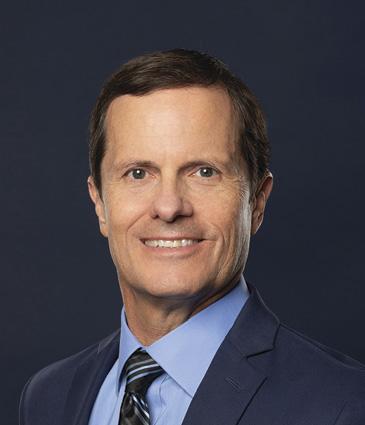
This restriction, which is referred to as the New Large Single Load (NLSL) policy, was put in place decades ago to keep low-cost hydropower from attracting too much of the nation’s heavy industry to Northwest states.
To put this in context, Benton PUD
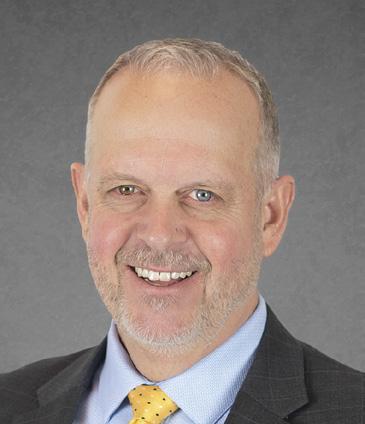
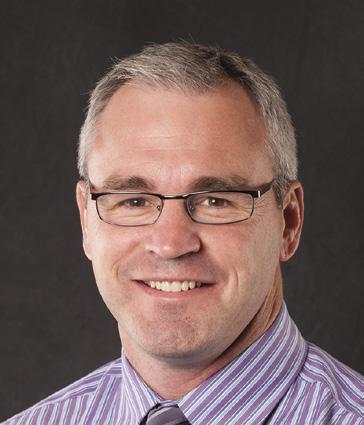
The decarbonization of the electric grid seems to be the topic of news stories across the country.
The call for replacement of the fossil-fuel infrastructure, that was built over centuries, with clean-energy alternatives is the mantra of this generation.
This decarbonization effort will require an unprecedented amount of investment, planning and skill if it is to be achieved without pitfalls. If carbon-based fuels are removed to quickly without replacement of similar baseload resources (generation that is available on demand 24/7, 365 days a year) the electrical system will become unstable.
Electricity is consumed as it is generated, which means consumer demand must always be in balance with the energy generated.
Intermittent resources such as wind and solar must be accompanied with baseload backup to be fully integrated into the electrical system.
Baseload resources such as hydro, small modular nuclear or carbon-based generation produce energy on demand and fill the gaps created by intermittent generation.
Baseload resources must have the ability to ramp up quickly to fill the voids
Scott Rhees Franklin PUDwhen the sun isn’t shining and there is no wind. Without baseload generation, the result is an electrical system that fails to maintain that balance between customer demand and electrical generation.
The western transmission grid ties states together.
The transmission grid, which is made up of high voltage electric lines, allows for the efficient movement of electricity throughout the western United States.
While individual utilities can operate lower voltage distribution systems independently and within boundaries, the transmission grid ties each utility together. This interconnectivity between electric utilities also ties state policymakers together as well.
Poor energy policy in one state can impact beyond a state line.
As California politicians have pushed ahead with the decommissioning of carbon and nuclear baseload generation, the result
has become a heavy reliance on intermittent generation.
This dependency on wind and solar power has complicated its energy operations and placed a dependence on hydropower from the Northwest and coal generation that is still operational from the Intermountain States.
As coal fired baseload generation continues to be decommissioned over the next few years there will be an even greater dependency on Pacific Northwest hydropower to fill intermittent energy voids and to meet peak demands during extreme weather events.
On Sept. 6, 2022, forecasters projected the highest system demand California had ever seen.
As energy consumption increased, energy providers and California Gov. Gavin Newsom issued alerts asking residents to reduce use.
Electric vehicle owners were told not to charge vehicles during this high heat event. As energy needs increased California began importing baseload hydropower from the Pacific Northwest to both meet demand and stabilize the electrical system – 6,500 megawatts average of Northwest hydropower energy exports helped keep
the lights on for California during its energy emergency.
This transfer of energy does not come without a cost to the Pacific Northwest. When California competes with its neighbors for electricity on the open energy market, prices skyrocket.
As electric demand increased as predicted on Sept. 6, prices throughout the west also increased, peaking at $2,000 per megawatt-hour compared to normal pricing of less than $70.
Without the existing hydro system, Energy Northwest’s nuclear generation, and carbon fuel generation, the Sept. 6 heat event would have looked much different. Baseload generation is still the workhorse that ensures electrical system reliability.
As carbon fuel plants continue to be decommissioned, policymakers need to consider the ramifications of a high reliance on solar and wind.
If we fail to plan and not allow time for baseload replacement generation, we will have weather events that will not only stress the transmission grid beyond its capability but will have shortages of generation when it is needed most.
Baseload resources are resources that
When I’m home, like everyone else, I flip on the light switch and expect my lights to come on without giving a thought about if there’s enough electricity available.
That’s the way it should be. People are busy and shouldn’t be concerned about there being enough electricity to keep the lights on, the refrigerator cool and the heating and cooling systems working.
Unfortunately, as a manager at Benton REA, I’m worried about our ability to have electricity available for our members at the flip of a switch.
I’m not alone. Utility managers across the Northwest are expressing serious concerns about not having enough electric generating resources to meet the demands of our consumers in the not-too-distant future.
There are several reasons. In simple terms, the demand for electricity is increasing while reliable forms of electric generation are being reduced.
I could spend the rest of this column explaining the details about the challenges utilities face to meet demand and would barely scratch the surface. Instead, I’m go-
state.
ing to focus on the rising number of electric vehicles to highlight the need for utilities and consumers to work together.
Vehicle emissions are the largest source of carbon emissions in Washington
Our state is focused on reducing carbon emissions and has aggressive goals to electrify our transportation. A 2022 bill requires all passenger and light duty vehicles with a model year of 2030 and beyond to be electric.
Projections for the sales of electric cars are increasing, with some indicating 50% of new cars sold by 2025 to be electric.
What does that mean for electric utilities? It could result in a huge increase in the peak demand for electricity.
In simple terms, we need more electricity in the evening, when customers are already using the most electricity.
Utilities often calculate peak demand in kilowatts (kW). The average house served by Benton REA has a peak demand of almost 10 kW of electricity and typically reaches that peak when people get home from work, cook, adjust their thermostats, wash dishes, wash clothes and so on.
An electric vehicle is typically charged by a 240-volt charger with a demand for electricity between 7-15 kW. If people have an electric vehicle, the natural thing to do is to plug it in when they get home. With just one electric vehicle, the house potentially goes from 10 kW to 17-25 kW of peak demand.
If the number of people owning electric vehicles is even close to the projections, utilities could see a huge increase in peak demand on our systems.
Utilities are concerned we won’t have reliable electric generation to meet that growing demand.
Utilities also may have to make significant and costly upgrades to our electric transmission and distribution systems for the power lines and transformers to have the capacity to meet the growing peak demand.
Worst case scenario: higher rates for consumers and less reliable electricity.
That is simply unacceptable!
There is a path forward that allows us to electrify transportation, reduce carbon emissions, keep rates low and keep the reliable electric system that our members want and need.
That path is utilities like Benton REA, partnering with our members and working together. Electric cooperatives like Benton REA are owned by our members, so working hand in hand with them comes naturally.
The average commute requires an electric vehicle to only plug in for a few hours to restore the battery to full charge.
Waiting until later at night to start charging reduces the peak demand of the house. The vehicle is still ready to go in the morning.
Combine that with reducing the rate at which the vehicle charges and charging midday while at work when the demand is also lower, and we are on a path to success.
By working together, we can incor-
Benton REA’s longtime manager has retired.
Mike Bradshaw worked at Benton Rural Electric Association for 33 years and spent 41 years in the electric utility industry.
Troy Berglund, vice president of member services, is serving as interim general manager.
The Benton REA Board of Trustees is working with a consulting firm to conduct a national search for a successor to Bradshaw, who retired in October.
A new general manager is expected in May 2023.
The U.S. Department of Energy will invest up to $72 million from the Bipartisan Infrastructure Bill to expand a program helps industry save energy and train workers.
The investment creates new Industrial Assessment Centers at trade schools, community colleges and union training programs and will go toward building new centers to support developing workers to support energy efficiency and emissions reductions in commercial and institutional buildings.
The program provides free, hands-on assessments to small- and medium-sized manufacturing facilities to help save energy, increase productivity and operations. It has conducted more than 2,000
assessments with typical savings of about $130,000 per client.
Cascade Natural Gas Co., the Kennewick-based utility that provides gas service to 310,000 customers in the Tri-Cities and other rural communities in Washington and Oregon, was the top-ranked gas utility in its category in J.D. Power’s 2022 Gas Utility Residential Customer Satisfaction Study.
The study considers safety and reliability, billing, corporate citizenship, price, communications and customer service.
J.D. Power said overall satisfaction dipped to its lowest point since 2016 on the increasing price of natural gas.
Cascade Natural Gas was the highest ranked utility among midsized utilities in the West. Long Beach Gas & Oil was second, followed by Intermountain Gas Co. and Avista.
Portland-based NW Natural and Seattle-based Puget Sound Energy were second and fourth among large utilities in the West.
The state Department of Ecology has joined the Western Climate Initiative Inc. to use the nonprofit’s secure online auction platform for Washington’s new carbon emissions allowance market.
Auctions are expected to raise hundreds of millions of dollars that will be invested in reducing emissions and improving the
state’s climate resiliency.
WCI Inc., formed by jurisdictions with cap and trade emissions programs, already provides such a platform for California and Quebec’s combined emissions market, as well as for Nova Scotia’s independent market.
Under the Climate Commitment Act passed earlier this year, Ecology must set up a cap-and-invest program by 2023. That program will set a statewide cap on greenhouse gas emissions, and then gradually reduce the cap to match the emission limits set in state law.
By 2050, greenhouse gas emissions are required to fall by 95%, and for the remaining 5% of emissions to be offset.
The law requires businesses and organizations that produce more than 25,000 tons of greenhouse gases a year to obtain emissions allowances for their total emissions.
New homes and apartment buildings built in Washington state must be equipped with electric heat pumps beginning in July.
The state Building Code Council recently voted in favor of the requirement. The switch aims to reduce carbon emissions and reliance on nonrenewable heat sources. Natural gas is pollutive, contributing to health issues in gas-burning homes and creating greenhouse gases that accelerate global warming, according to a press release from the governor’s office.
The Building Industry Association of Washington expressed frustration at the mandate, saying the council ignored industry concerns that it will further aggravate
the state’s housing crisis.
“Washington has both a housing shortage and a housing affordability crisis. At a time when only roughly 15% of households in Washington can afford to purchase a median-priced home, this additional tax on energy only makes things worse,” said Greg Lane, BIAW’s executive vice president.
The association said the new requirement removes the incentive for natural gas companies to run natural gas into new homes, essentially eliminating the ability for homeowners to have natural gas ranges and fireplaces.
The Bonneville Power Administration will hold its power and transmission rates flat in 2024-25 as a buffer against market volatility.
The federal power marketing agency, based in Portland, said its strong 2022 financial performance allowed it to hold rates flat. If approved by the Federal Energy Regulatory Commission, the rates will be in effect Oct. 1, 2023-Sept. 30, 2025.
BPA provides power generated by 31 federal dams and the Columbia Generating Station nuclear plant in Richland to 142 Northwest utilities, including those serving the Tri-Cities.

BPA said it was able to include $129 million to protect against the risk of rate fluctuations, which should protect rates during the 2024-25 rate period.
BPA is legally required to cover its costs and adjust rates accordingly. It establishes rates for two-year periods.
Freddie Mac reports a mortgage program focused on green energy helped avoid greenhouse gas emissions equivalent to taking 2,433 cars off the road in 2021.
Freddie Mac, established by Congress to provide capital to mortgage lenders, said its Green Mortgage Backed Securities program issued $617 million in bonds backed by 2,454 Freddie Mac GreenCHOICE Mortgage refinance loans.
To qualify for the program, the property had to have a renewable energy source installed. In some cases, refinanced mortgages paid off debt associated with installing solar panels.
According to Freddie Mac, the 2021 Single-Family Green MBS program netted enough energy to power 1,877 homes and saved homeowners an average of $1,027 in annual utility bills.
Go to FreddieMac.com.
The Pacific Northwest Hydrogen Association (PNWH2) – a public-private partnership of tribal, labor, government, environmental and private sector hydrogen
company leaders – recently submitted its 20-page concept paper to the U.S. Department of Energy (DOE), outlining the significant breadth and depth of possibilities for a hydrogen hub in the Pacific Northwest.
PNWH2 is leading a regional effort to land one of very few shares of the DOE’s $8 billion investment in a nationwide network of clean hydrogen hubs under the Infrastructure Investment and Jobs Act.
With the states of Washington and Oregon collaborating in this effort, the PNWH2’s final proposal aims to demonstrate the region’s assets for supporting a hydrogen hub, including natural renewable hydropower and a rich history of innovation in the agriculture, transportation, manufacturing, high tech, maritime and clean tech sectors.
The Biden-Harris Administration, through the U.S. Department of Energy (DOE), recently announced $13 billion in new financing opportunities for the expansion and modernization of the nation’s electric grid.
The Grid Resilience Innovative Partnership, or GRIP, program and the Transmission Facilitation Program together represent the largest single direct federal investment in critical transmission and

distribution infrastructure and one of the first down payments on an over $20 billion investment under the administration’s Building a Better Grid Initiative.
The federal investments will unlock billions of dollars of state and private sector capital to build projects that increase the reliability of the power grid and modernize it so that more communities and businesses have access to affordable, reliable, clean electricity – helping deliver on the President’s goal of 100% clean electricity by 2035.
Independent estimates indicate that the U.S. needs to expand electricity transmission systems by 60% by 2030 and may need to triple current capacity by 2050 to accommodate the country’s rapidly increasing supply of cheaper, cleaner energy and meet increasing power demand for electric vehicles and electric home heating as well as reduce power outages from severe weather.
Washington’s new Clean Fuel Standard will begin cutting greenhouse gas emissions from transportation – the state’s largest source of carbon pollution – on Jan. 1.
Over the next 12 years, the new standard is forecast to reduce annual transportation emissions statewide by 20%, or about 4.3 million metric tons of carbon
dioxide equivalent. That’s comparable to taking more than 900,000 cars permanently off the road.
The state Legislature passed the Clean Fuel Standard in 2021 and directed the state Department of Ecology to implement the program beginning in 2023.
The new program uses a market approach to incentivize fuel producers to reduce the “carbon intensity” of their products by 20% by 2034 – four years faster than first proposed. The accelerated timeline comes in response to strong public feedback and an independent economic analysis and fuel supply forecast that show 2034 is an achievable target.

California, Oregon, and British Columbia have adopted similar programs for transitioning to low-carbon fuels. Even before Washington’s program formally begins, fuel producers and energy suppliers have moved to increase clean fuels production. Most notably, BP America committed last year to invest $269 million to double the production capacity of renewable diesel at its Cherry Point refinery, near Ferndale.
The program also includes incentives for building charging infrastructure for electric and hydrogen-fuel vehicles and includes provisions to ensure overburdened communities see increased access to clean transportation.
from shouldering the burden of heavy users.
Though utilities are obligated to serve customers within their jurisdiction, customers are directly responsible for paying the cost of necessary upgrades to infrastructure to accommodate their load demand. This is not limited to just transformers, but entire substations as well.
“Something of a really large magnitude, like Darigold or Amazon, they require substations … and those take time to build. It might take three years to build a substation. Sometimes it’s just a matter of timing,” said Troy Berglund, interim general manager and vice president of member services, Benton REA.
“We encourage prospective customers to contact us to make sure that their service is sized appropriately,” Meyer said. “If they damage infrastructure, they take responsibility for that too.”
“You don’t get a lot of mystery loads that are large loads,” Rhees said. “Ultimately, that transformer is going to be undersized. Worst case, they are going to burn up the transformer or will blow a fuse.”
He explained that though residential customers do set mining operations up
in a spare room or garage to make extra income, they would be hard-pressed to cram enough servers into a house to cause significant impact.
The Northwest power grid is essentially at capacity, which compounds the situation and leads to increases in the market prices for energy.
Energy production is not a limitless supply even when renewable energy such as hydropower is involved. Existing facilities are only capable of generating so much energy.
“Our total load is above that firm allocation of BPA Tier 1 energy. Anything else above that we supply with market wholesale,” Meyer said. “Firm allocation” refers to the amount of power BPA can reliably deliver in a low-water year when dams aren’t producing at capacity. If demand exceeds that level, the system buys power on the open market, which is typically expensive.
“Right now, we’re in an area where we’re worried about if there’s enough total generation to meet our member needs moving forward,” Berglund said.
He said this is due to the double-edged situation faced by utilities. Coal plants, long a reliable energy source but a significant source of carbon emissions, are
being shut down in the Pacific Northwest and around the country at the same time new technologies are coming online that place new demand on the grid.
“Even in counties that own dams … even they’re meeting their limits. Utilities are looking a lot closer at what loads they’re bringing on and if they can meet that demand,” Berglund said.
“All the utilities have a really good relationship with TRIDEC and other economic development organizations in the surrounding communities. (TRIDEC) is involved directly with meetings with BPA and Energy Northwest; they know how important power is to bringing in these businesses and the energy to support them,” Berglund said.
Both Meyer and Berglund said data and crypto mining operations are not permanent investments in communities.
“It’s not like a manufacturing plant that gets built that someone has invested billions of dollars in that you can’t move. These are operations that can be moved in a weekend. They’re just not compatible with long-term energy planning,” Meyer said.
“These mining operations represent a lot of load growth but not a lot of job growth, so are not a great fit for us,” Berglund added.

Berglund pointed out that crypto and data mining are not the only sources of demand affecting utilities.
Rising demand from electric vehicles (EVs) poses a serious demand for additional power to keep them charged.
“The general population thinks about how far an EV can go on a charge, but we’re looking at it from the standpoint of: if we see EV adoption as projections are showing, then we will have a whole myriad of issues to confront.”
He said that with multiple houses powered by a single transformer, energy demand to charge EVs and installation of at-home fast charging stations will significantly strain residential infrastructure as more people opt for EVs.
As carbon-emitting sources of energy production are retired and environmental groups push to remove dams, local utilities and BPA are being pushed to explore new energy options such as nuclear, solar, wind and more.
As Berglund summed it up, “There are a tremendous amount of challenges utilities face moving forward. It’s not the first time and it creates opportunities to get innovative.”
future opportunities to develop chemical process chips for new applications beyond hydrogen generation.
“There are many more applications for our technology, Wegeng said. “Chemical reactors can be developed to produce ammonia, methanol, and other chemical products using the chemical processing chips.”
Christina Lomasney, director of commercialization at PNNL, is impressed with STARS’ work.
“We applaud the work by Bob Wegeng and his team at STARS in translating cutting-edge, taxpayer-funded, PNNL research into economic impact,” Lomasney said in a press release. “The STARS team (members) are pioneers in the realization of a viable clean hydrogen economy. It is gratifying to see the local venture ecosystem – led by Fuse Fund – bringing support to our homegrown entrepreneurs and their visions for a better future.”
Wegeng credits the support of PNNL; HiLine Engineering and Fabrication, and company owner Troy Stokes and his team of engineers; Concept Systems Engineering of Kennewick; California’s Barr Engineering; Oregon State University; SoCalGas; and SunLine.

According to STARS, hydrogen has been recognized by many as the most viable solution to large-scale decarbonization of the heavy-lift transportation industry.
Wegeng believes this is the hydrogen decade, as the transition from fossil energy to clean hydrogen energy begins.
“The market for hydrogen is expected to grow exponentially over the next few de-
cades, driven by the wide adoption of fuel cells in a new class of zero-emission vehicles, or ZEVs,” according to the company.
It took Wegeng’s group years to get to this point.
“Finding the right solution sometimes involves finding what doesn’t work,” Wegeng said. “There have been many pivots to get to where we are today.”
But it’s led the company to where Wegeng feels STARS is introducing the right technology at the right time. He said the momentum is growing for developing the clean hydrogen infrastructure that will support fuel cell deployment.
The federal government recently passed the Bipartisan Infrastructure Bill which included $8 billion for regional hydrogen hubs (“We’re involved with helping develop the proposal to create a regional hub in the Pacific Northwest,” said Wegeng), and the Inflation Reduction Act, which carried about $370 billion in subsidies and credits for clean energy investment in the United States.
In California, what STARS is doing will meet the new Federal Clean Hydrogen Standard for fueling SunLine’s fuel cell buses.
Fuel cells produce electricity by a chemical reaction that converts hydrogen and oxygen (from air) to water.
The lower weight of fuel cells and compressed hydrogen make fuel cells an ideal alternative to batteries, where the weight and recharging time of batteries can be problematic.

Fuel cells with compressed hydrogen weigh a fraction of a battery pack with the same energy storage capacity, and they can
be refueled in minutes (comparable to gasoline-powered vehicles).
What Wegeng and his staff believe is that “as the nation transitions to electric propulsion, it’s expected that at least 30% of the transportation sector will utilize fuel cells for electricity.”
That 30% could include cars that routinely drive long distances, delivery vehicles, long-haul trucking, mass transit, and even ships and aircraft.
The STARS hydrogen generator units that turn methane and water into hydrogen is done in a process called steam-methane reforming.
Heat for the reaction is maintained using electrical induction heaters.
When the renewable natural gas is used, the hydrogen produced has a negative carbon intensity.
The additively-manufactured chemical process chips are made from highly efficient microchannel devices.
With mass production, the compact and modular units can be placed on the existing natural gas grid to produce onsite, affordable hydrogen at filling stations or industrial locations that will compete with gasoline.
Fuse’s mission is to help grow the entrepreneurial ecosystem in the Tri-Cities, providing resources to support the success of local entrepreneurs and startups.
In late August, Fuse Fund, made up of local community-minded investors based in the Tri-Cities, announced a financing round for the project of $150,000.
Fuse worked with other local investors to raise another $350,000 for a total of $500,000.
“It’s a community story,” Wegeng said. “The investment helps us get across the finish line for the H2 SilverSTARS demonstration project.”
The Fuse Fund group had been working with STARS managers for the last two years to get the company investment ready.
“Bob pitched to us that he needed $300,000,” Conger said. “I said, ‘Let’s make it $500,000 because you’re always going to have surprises.’ The STARS technology reduces production costs and uses only 20% of the power required by electrolyzes to make its hydrogen. Bob’s story resonated with our investors. One individual wanted in for $100,000.”
STARS is just one of many investments by Fuse.
In September, Fuse announced that its local investors had achieved total funding commitments to local companies totaling $2.025 million.
Fuse Funds, as of September, has $800,000 either invested or pending in five startups that did make it through the group’s evaluation and funding process.
“The important point is that these investments are being made to benefit startups operating in and around the Tri-Cities,” Conger said. “Nobody in Fuse Funds is paid a salary. They’re volunteering their time for the Tri-Cities.”
And everyone is excited to see the STARS commercial demonstration get started, especially Wegeng.
“I am impatient,” he said. “I’ve been waiting 25 years for this.”
search Stars Technology Corporation: starsh2.com.
search Fuse Fund: https://fuse.fund.
energy” required by industry.
acquires about 210 aMW of wholesale electricity annually for delivery to more than 57,000 customer meters. So, while 10 aMW is a large number for any one customer, it is common for heavy industry or manufacturing facilities to require many multiples of that.
The bottom line is low-cost BPA hydropower is already spoken for and while wind and solar farms can produce large quantities of intermittent energy on an annual basis, they cannot produce the “firm
can be counted on nearly 100% of the time. While the world is calling for more renewable generation, politics should not be the driver for change.
The recent California energy dilemma and other events like the February 2021 cold spell that happened in Texas show how devastating the loss of power can be.
The call for decarbonization is ongoing. However, the lack of technological solutions needs to be recognized.
, From page C8
porate electric vehicles onto our system, reduce carbon emissions, reduce the costly upgrades to our infrastructure, lessen the amount of the new electric generation that will be required, maintain a reliable system and keep our rates low for members.
This same philosophy of working together applies to other issues facing the
While it is popular with politicians and media to suggest energy storage is ready for prime time, the capital cost of grid scale batteries needed to firm large amounts of wind and solar are far too high to be affordable for many electricity intensive industries which need costs to be in the ballpark of 5 cents per kWh or less.
I wish I had better news when it comes to attracting industry with big job prospects to Benton County, but I just don’t see how it can be done now that CETA
Over time we might find the necessary solutions but today we are not there.
While wind and solar have a place in an electric utility’s energy portfolio, the challenge is that their reliability is intermittent. You get power when it’s windy or sunny and when it’s not, you don’t.
It is that simple. That intermittent generation wouldn’t be a problem if we had a cost-effective, reliable way to store power – but we don’t. At least not yet.
The good news is that this energy transition is possible, but it must be with
electric utility industry in the efforts to reduce carbon.
Legislators and utilities need to work together to ensure laws don’t establish goals that eliminate necessary and reliable resources before the technology is available to replace them.
We need to work together to improve salmon runs while keeping the lower Snake River dams, which produce in-
mandates have taken new baseload capable and 50% cleaner-burning natural gas generation off the table.
Benton PUD continues to advocate for a more rational coal-to-natural gas-to-nuclear clean energy policy, but I don’t see natural gas getting a reprieve anytime soon.
On a positive note, Benton PUD supports the development of advanced nuclear technologies, including the small modular reactors, or SMR, being considered for Grant and Benton counties.

reasonable reforms and realistic expectations but most importantly, with the right people making the decisions.
Allowing the experts in the energy industry to use their knowledge and lead the charge towards integrating intermittent resources in a more sustainable and reliable manner.
At Franklin PUD we are actively preparing for a clean energy future and fully support clean energy policy.
We recently increased the amount of baseload hydropower in our energy
credibly valuable and reliable carbon-free electricity and allows for barging, which avoids hundreds of semitrucks or train rail cars and the increased emissions that would result.
Benton REA is committed to working with our members, our legislators, and all interested parties to find common ground and common-sense solutions.
The challenges we face are difficult. But
Unlike wind and solar power, SMR technology offers the promise of always on non-emitting electricity on a small footprint, and the opportunity to add modules when big industry knocks on the door of Tri-Cities’ economic development interests.
It will take time and some federal assistance to be cost-competitive, and we need to start now.
Rick Dunn is general manager of Benton PUD.
portfolio, which will result in a 96% clean, dependable energy portfolio.
As we move forward, where appropriate and in the right amounts we will add additional wind and solar to our mix. As we do so we will reach the goal of a 100% clean portfolio.
We support wise energy policy and will continue to do our part to ensure an affordable, clean, stable electrical system.
Scott Rhees is general manager of Franklin PUD.
I have faith in the cooperative spirit that I know still exists. I am hopeful that we can come together in a respectful manner to find the solutions that our members and our communities deserve.
Troy Berglund is interim general manager and vice president of member services at Benton Rural Electric Association.